This article dives into effective strategies for achieving success in transcription verbal operant training within ABA therapy. It highlights the importance of personalized interventions and various teaching techniques. By understanding different types of verbal operants, we can enhance children's communication skills and foster meaningful interactions.
Let’s face it—parents often encounter challenges in helping their children communicate effectively. It can feel overwhelming, right? But don’t worry, we’re here to help you every step of the way! By exploring personalized approaches, we can create a supportive environment that encourages growth.
Imagine using techniques tailored to your child’s unique needs. This not only boosts their skills but also strengthens your bond with them. It’s all about finding what works best for your little one!
As we journey through this together, remember that understanding verbal operants is key. These insights will empower you to foster those meaningful interactions that every parent desires. So, let’s explore this together and discover the tools that can make a difference in your child's communication journey!
Understanding the intricacies of verbal operants is essential for fostering effective communication skills, especially in children with autism. 🌟 By exploring seven targeted strategies for transcription verbal operant success, parents and therapists can unlock new pathways for meaningful interactions and language development. But what happens when traditional methods fall short? Can personalized approaches truly make a difference in a child's ability to communicate?
This article delves into effective techniques and insights that can transform verbal behavior training. We’re here to help you every step of the way! Let’s explore this together and offer hope and practical solutions for families navigating these challenges.
At Rori Behavioral Innovations, we understand that individualized ABA therapy is crucial for your child's communication growth. By focusing on transcription verbal operant, we can help foster meaningful connections. Our clinicians conduct thorough evaluations to pinpoint each child's unique needs, ensuring that interventions are tailored just for them. This personalized approach not only makes therapy more effective but also aligns with your child's distinct learning style, which can lead to greater involvement and success in transcription verbal operant training.
We know that navigating these challenges can be overwhelming. Many parents share stories about how personalized therapy made a difference in their child's life. It’s all about finding what works best for your little one! We’re here to support you every step of the way. So, let’s explore this together and see how we can help your child thrive!
At Brighter Strides ABA, we believe that understanding transcription verbal operants is essential for helping youth with autism thrive in their interactions. By exploring different types of verbal operants, such as mands, tacts, intraverbals, and transcription verbal operant, therapists can guide children in expressing their needs, labeling their surroundings, and joining in conversations. This foundational knowledge is not just important; it’s essential for crafting a well-rounded approach in ABA therapy.
Let’s dive a little deeper! Imagine a child learning to ask for their favorite toy or to name things around them. These moments are not just milestones; they’re stepping stones toward greater communication skills. By nurturing these abilities, we’re helping children connect with their world and the people in it.
So, if you’re a parent looking for ways to support your child’s communication journey, remember that you’re not alone. We’re here to help you every step of the way! Together, we can explore the resources and strategies that can make a difference in your child’s life.
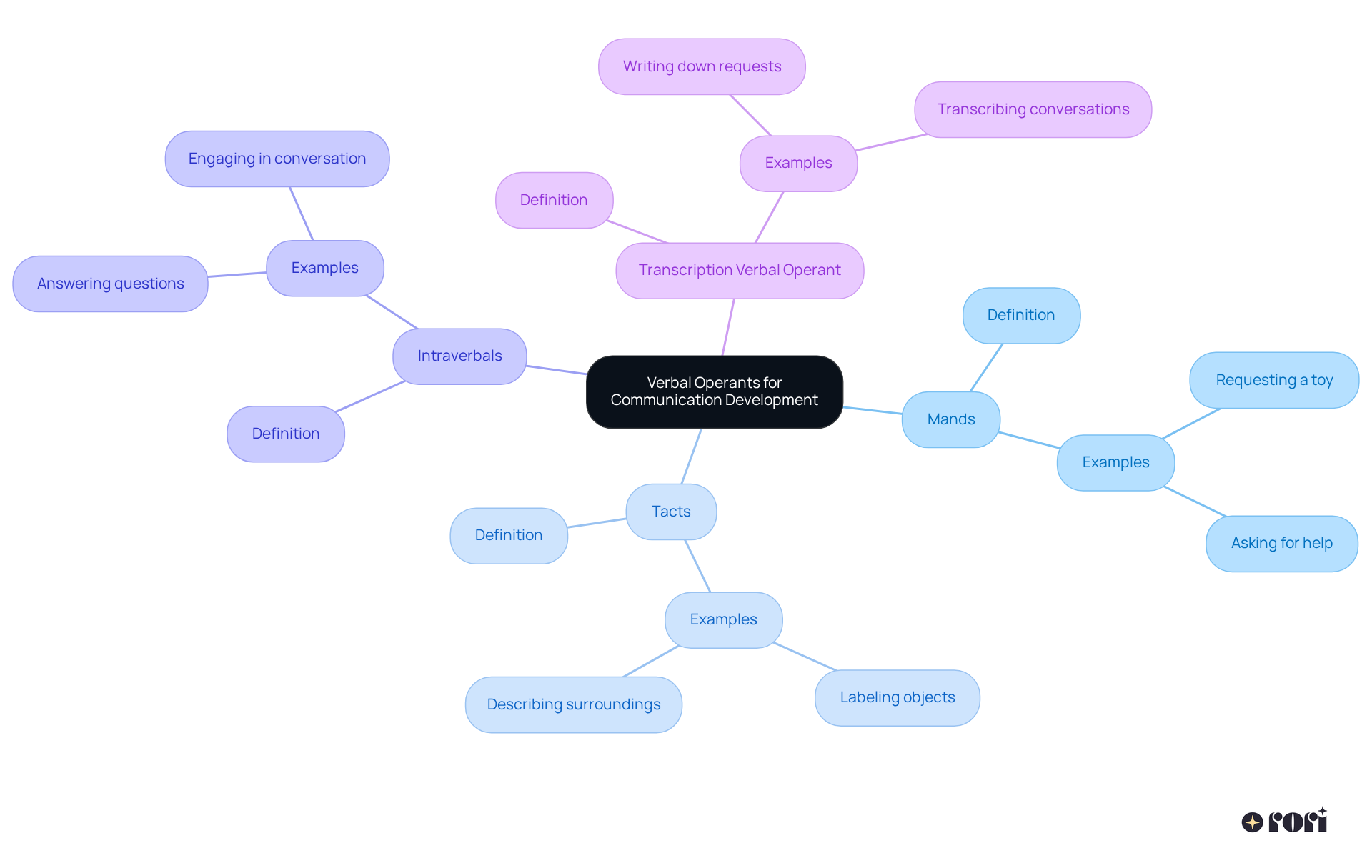
Verbal behaviors are the building blocks of interaction skills in ABA therapy. By focusing on these behaviors, therapists help young individuals learn to communicate effectively. This is so important for their social interactions and overall development! 🌟
The power of spoken behaviors lies in their ability to foster meaningful interactions. They enable young individuals to express their needs, share experiences, and connect with others in a genuine way. Isn’t it wonderful how communication opens doors to connection? Let’s explore this together!
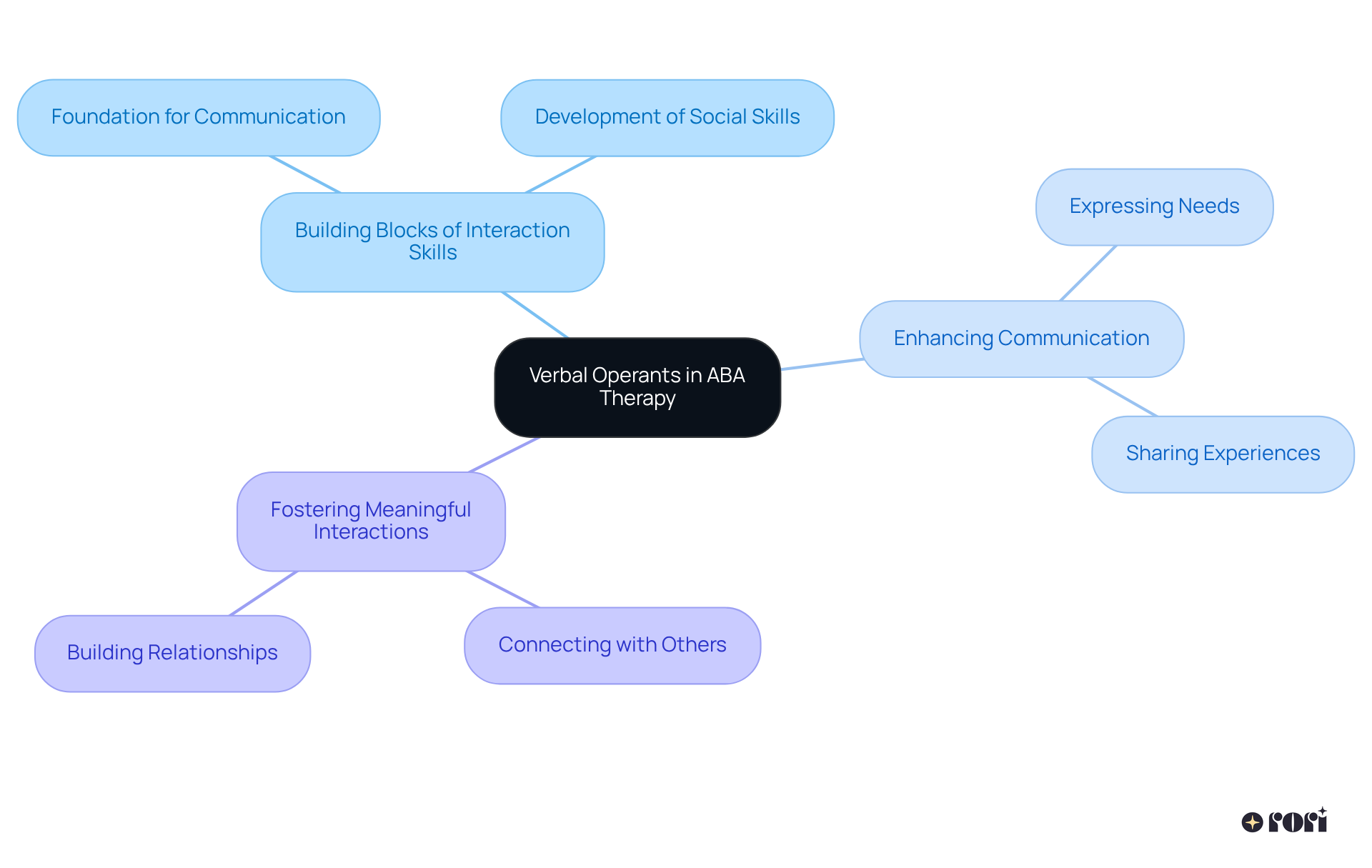
The primary types of transcription verbal operants are essential components of language development, each serving a distinct function in communication. Let’s dive into them!
Mand: This operant is all about making requests for specific items or actions, like asking for a toy or a snack. Mands are crucial for expressing needs and desires, and they can really help reduce those pesky behaviors that come with wanting something. For example, when a little one says, 'Juice' while pointing at their cup, that's a mand operant in action!
Tact: Tacting refers to the ability to label or describe objects, actions, or events around us. Imagine a child pointing to a toy and naming it—that’s them demonstrating tact! Mastering tacts can boost social interactions and expressive language, allowing kids to communicate their observations effectively.
Echoic: Echoic behavior is all about repeating what someone else has said, which is super important for language acquisition. Think about it: when a child hears an adult say 'apple' and then repeats it, they’re engaging in echoic behavior. This operant lays the groundwork for developing speech sound discrimination and accurate pronunciation.
Intraverbal: This operant involves responding to questions or engaging in conversation without needing a direct visual cue. For instance, when a child answers the question 'What’s your favorite color?', they’re showcasing intraverbal behavior. Building these skills is crucial for having meaningful conversations and social interactions.
Each type of transcription verbal operant plays a vital role in nurturing a child's language skills, helping them communicate effectively and connect with others. Recent studies highlight how these actions can improve interactions for individuals with autism, emphasizing their importance in developing functional language abilities and fostering independence. As B.F. Skinner wisely noted, 'These behaviors are essential in teaching individuals with communication challenges to effectively express themselves, comprehend others, and engage in meaningful interactions.' Verbal units are functional components of language that encompass various categories, reinforcing their foundational role in language development.
So, let’s explore this together and see how we can support our little ones on their language journey!
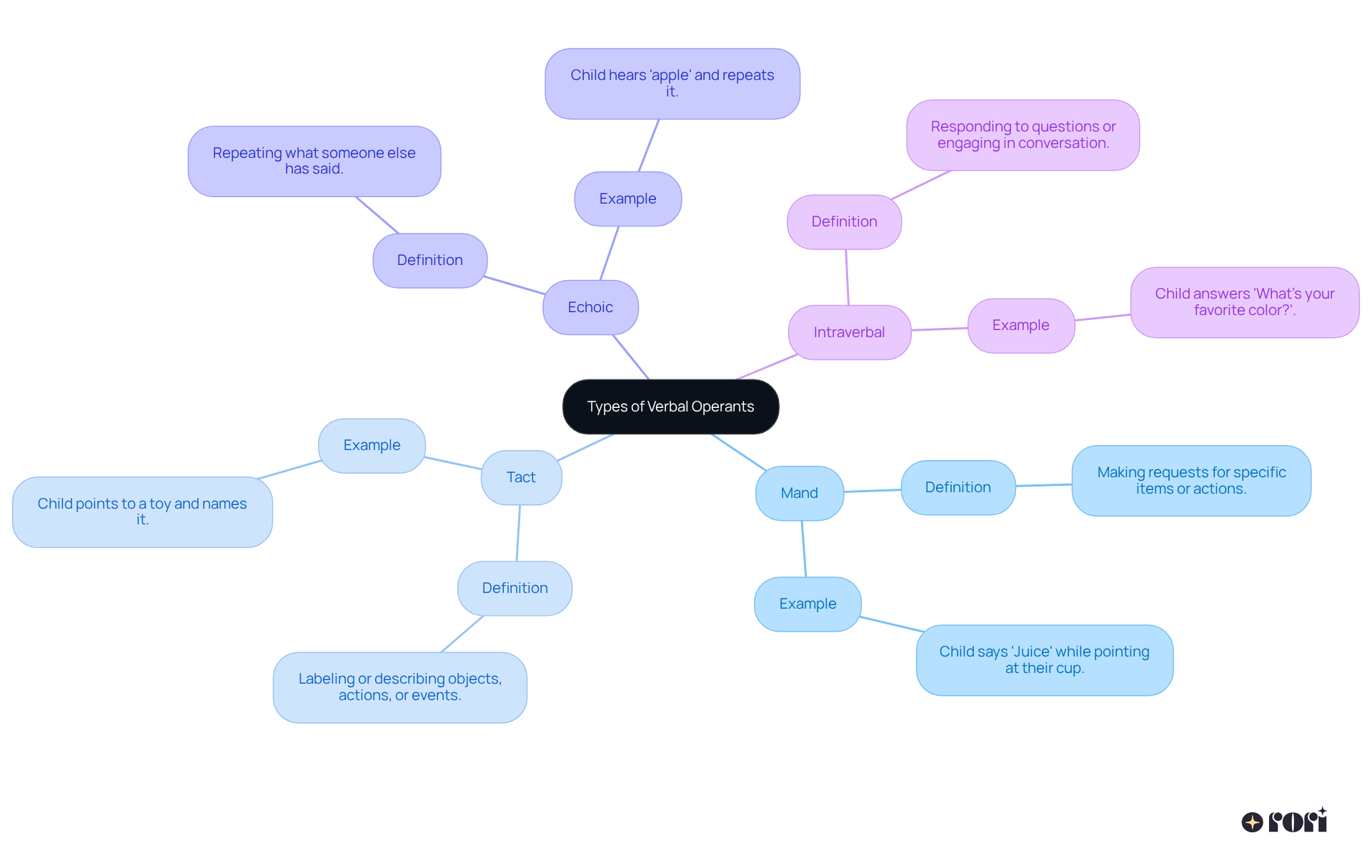
Teaching transcription verbal operants can be a rewarding journey, and there are some effective strategies that can help! 😊
Natural Environment Teaching (NET): This is all about weaving learning into everyday moments. Think about how your child can practice skills naturally while doing things they love—this helps them generalize what they learn!
Discrete Trial Training (DTT): Here, we break tasks down into smaller, manageable steps. It’s like building a LEGO tower—one piece at a time! By using reinforcement, we can encourage success and make learning fun.
Prompting and Fading: Offering cues can be a great way to support your little ones in using their transcription verbal operant skills. As they grow more confident, we gradually decrease our support, helping them to shine on their own.
These techniques are essential for nurturing those important interpersonal skills in a structured yet friendly way. Let’s explore this together and see how we can make learning a joyful experience!
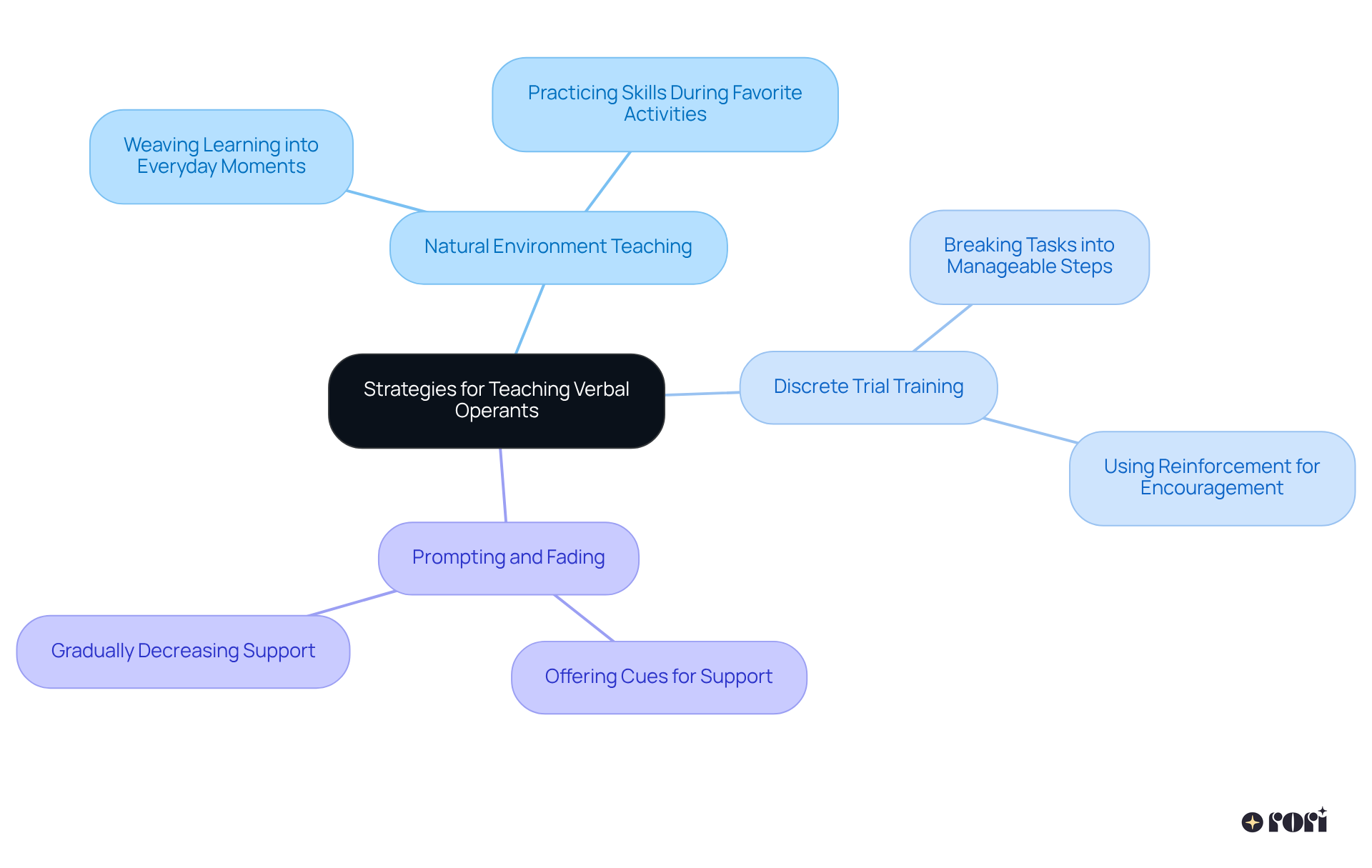
Individualized instruction is a key part of effective ABA therapy. By taking the time to understand each child's strengths, challenges, and preferences, therapists can create personalized interventions that truly resonate with the child's unique learning style. This tailored approach not only boosts engagement but also fosters a deeper understanding of language behaviors. As a result, children enhance their communication abilities and gain greater independence in expressing their needs and wishes. Let’s explore this together!
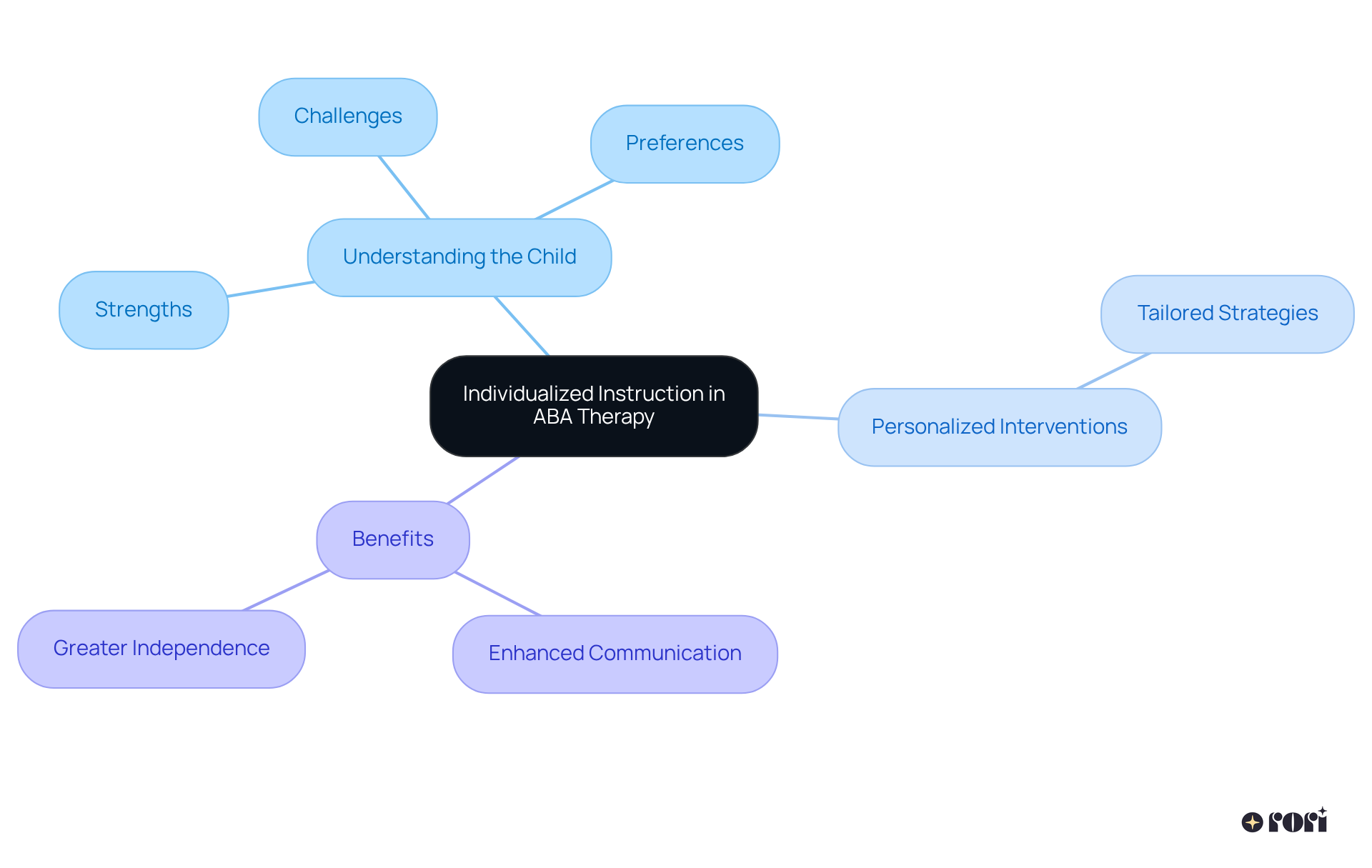
Current research highlights how effective evidence-based strategies can be, especially regarding the teaching of transcription verbal operants. Did you know that positive reinforcement plays a crucial role in promoting desired behaviors? It can really enhance learning outcomes for individuals with autism! For instance, children who are part of intensive ABA therapy, particularly those receiving 30 or more hours each week, show remarkable progress in their expressive language and interaction skills.
Research indicates that these youngsters often achieve greater improvements in expressive language and independent living skills compared to those in part-time programs. Isn’t that encouraging? Organized instructional techniques, like Discrete Trial Training (DTT) and Natural Environment Teaching (NET), are fantastic at fostering skills related to transcription verbal operant. They provide clear, structured guidance and opportunities for practice in real-world settings, leading to enhanced expressive abilities. These approaches not only help in skill development but also encourage independence in daily living tasks.
As the world of ABA therapy evolves, staying updated on the latest research findings is vital for therapists. Studies by Johnson et al. (2019) and Brown and Davis (2016) are great resources to ensure effective interventions. Parents, it’s a good idea to chat with your child’s therapist about the specific reinforcement strategies being utilized to support their learning. Let’s explore this together! We’re here to help you every step of the way!
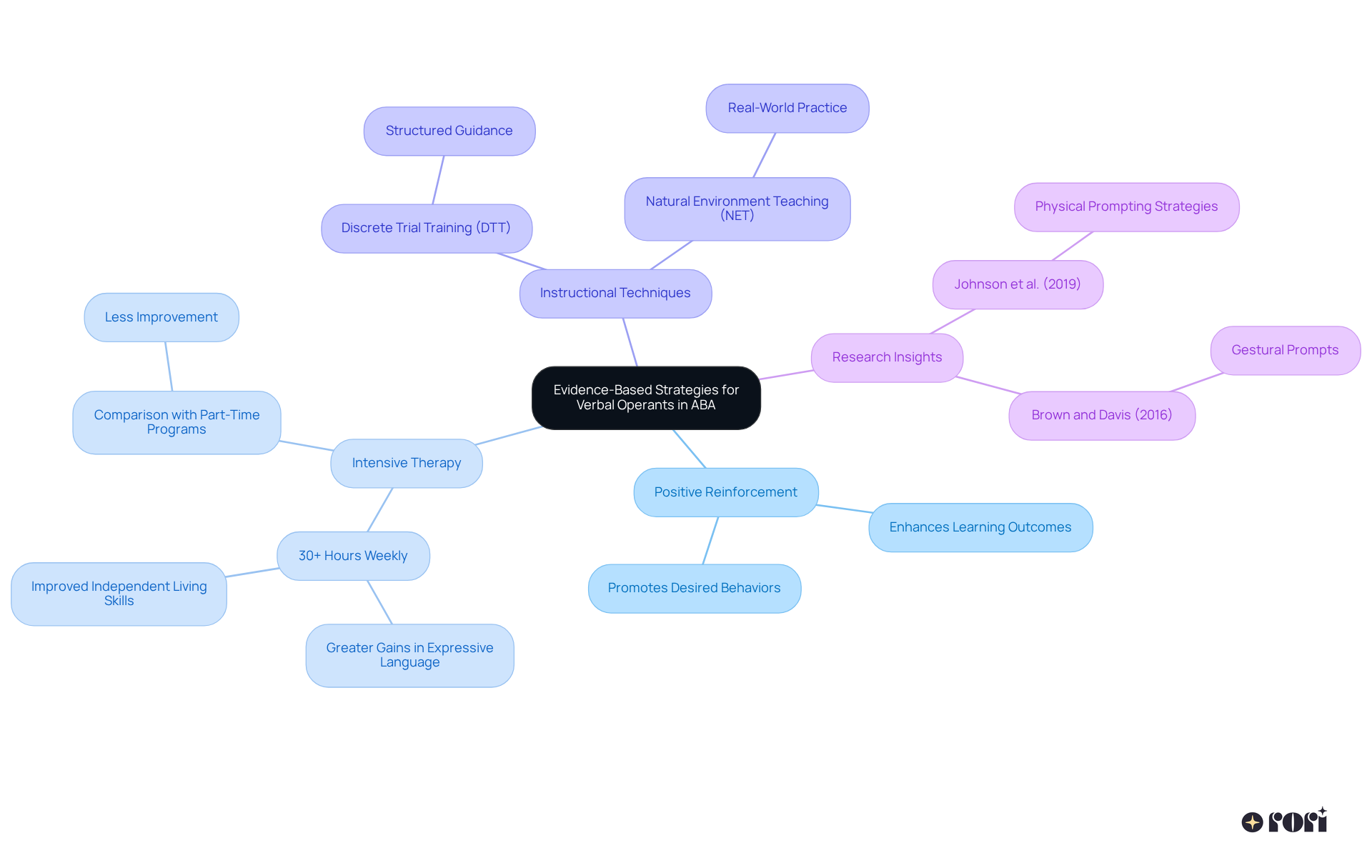
Verbal behaviors play a crucial role in language growth, serving as the building blocks for effective communication. When kids master these behaviors, they can better express their needs, join in conversations, and develop important social skills. This ability to use spoken language effectively not only boosts a child's communication skills but also fosters independence and confidence in social situations—both of which are essential for their overall development.
Let’s explore this together! By understanding the importance of verbal behaviors, you can help your child thrive in their interactions. Remember, every little conversation is a step toward building their confidence and social abilities. We’re here to help you every step of the way!
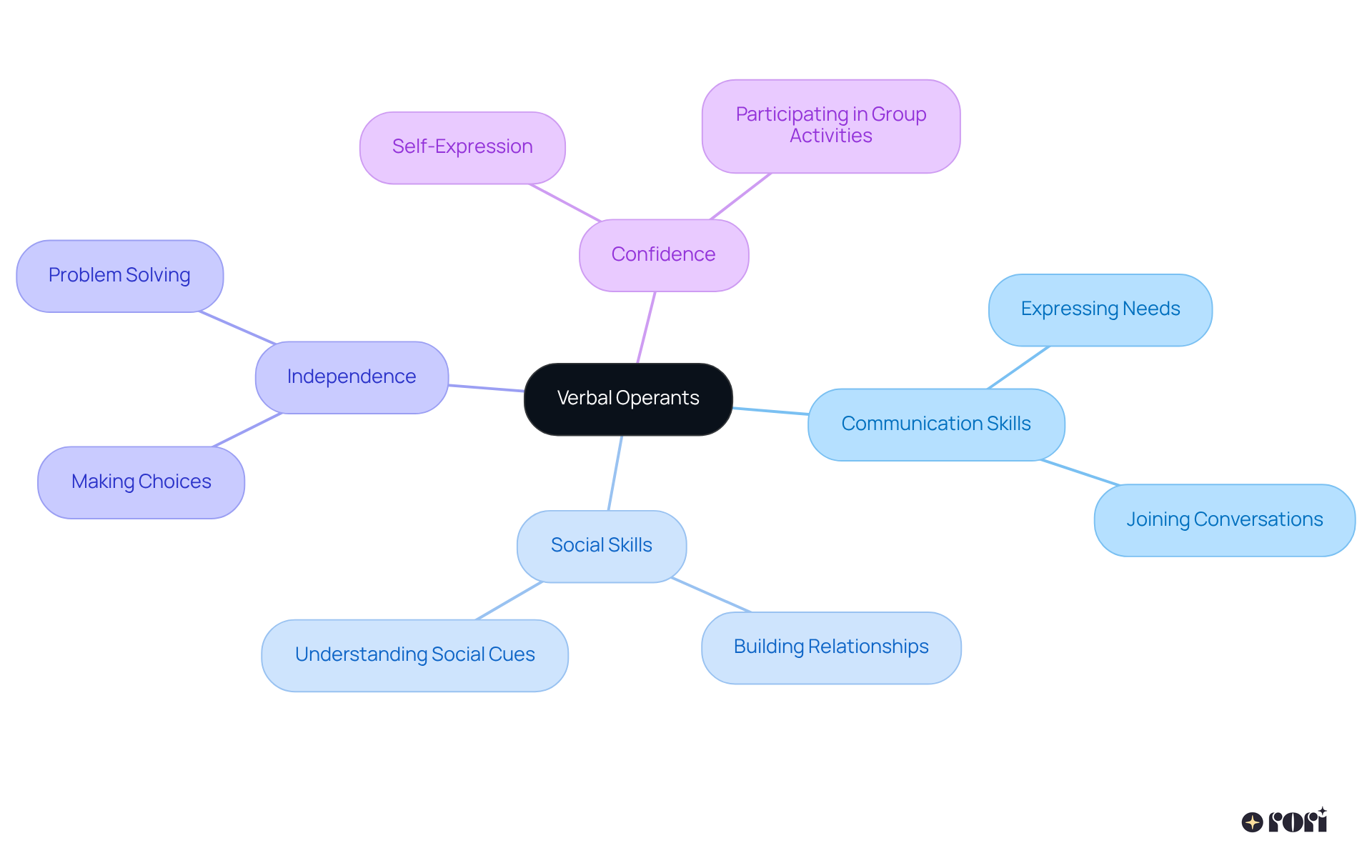
Integrating transcription verbal operant into ABA therapy can be a fun and engaging way to support your child's development! For example, during playtime, therapists can encourage kids to use mands by prompting them to ask for their favorite toys or activities. And during storytime, children can practice tacts by labeling characters or objects in the book. By weaving transcription verbal operant and other linguistic behaviors into everyday moments, therapists help create meaningful learning experiences that boost language growth and interaction skills. Let’s explore this together!
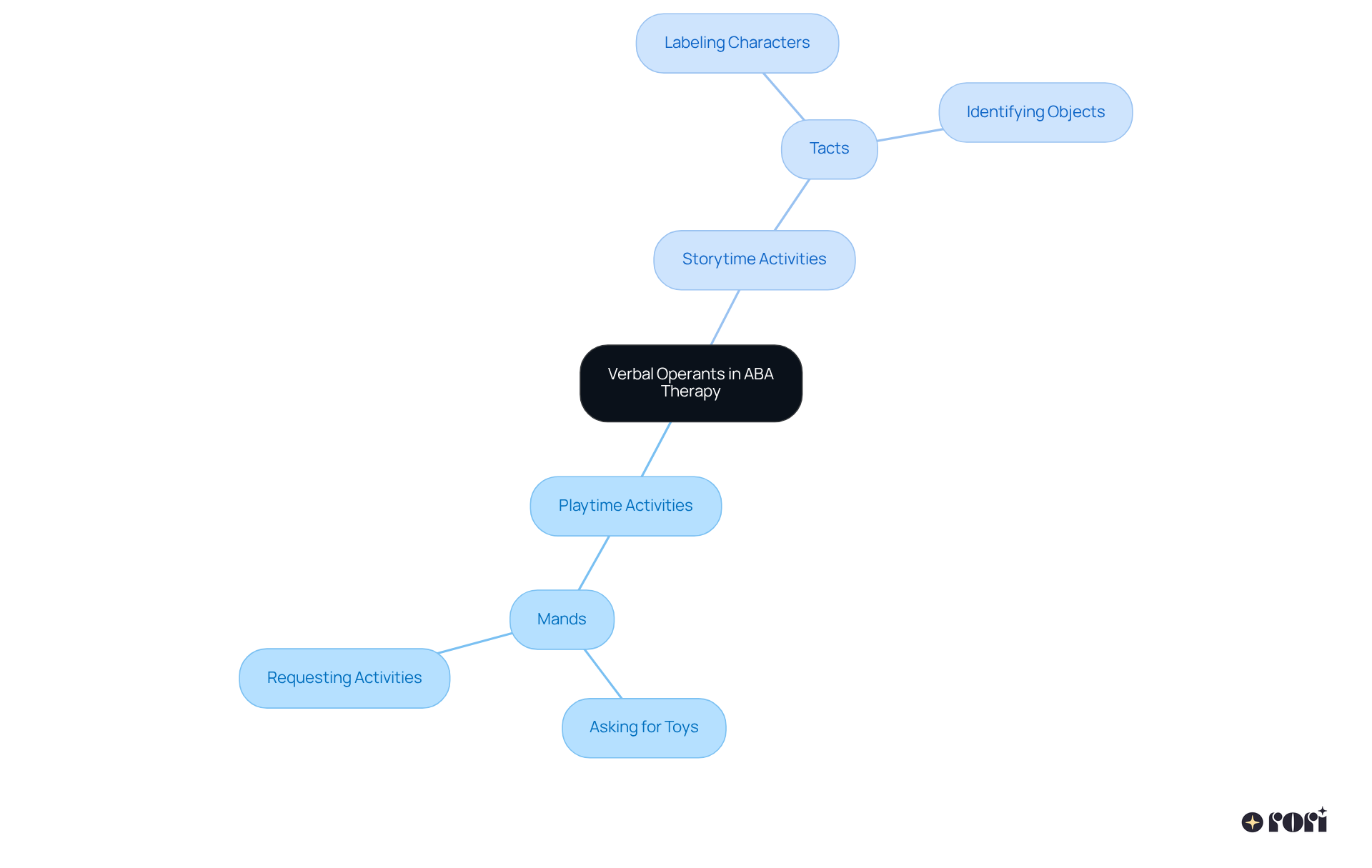
Understanding how we speak involves a fascinating interplay between our brains and our behaviors. Research indicates that specific areas of the brain light up during conversations, highlighting just how crucial language is in our learning journey. By understanding these processes, therapists can truly grasp the importance of teaching transcription verbal operant skills, enabling them to customize their approaches to help children with autism thrive in their language development. Let’s explore this together!
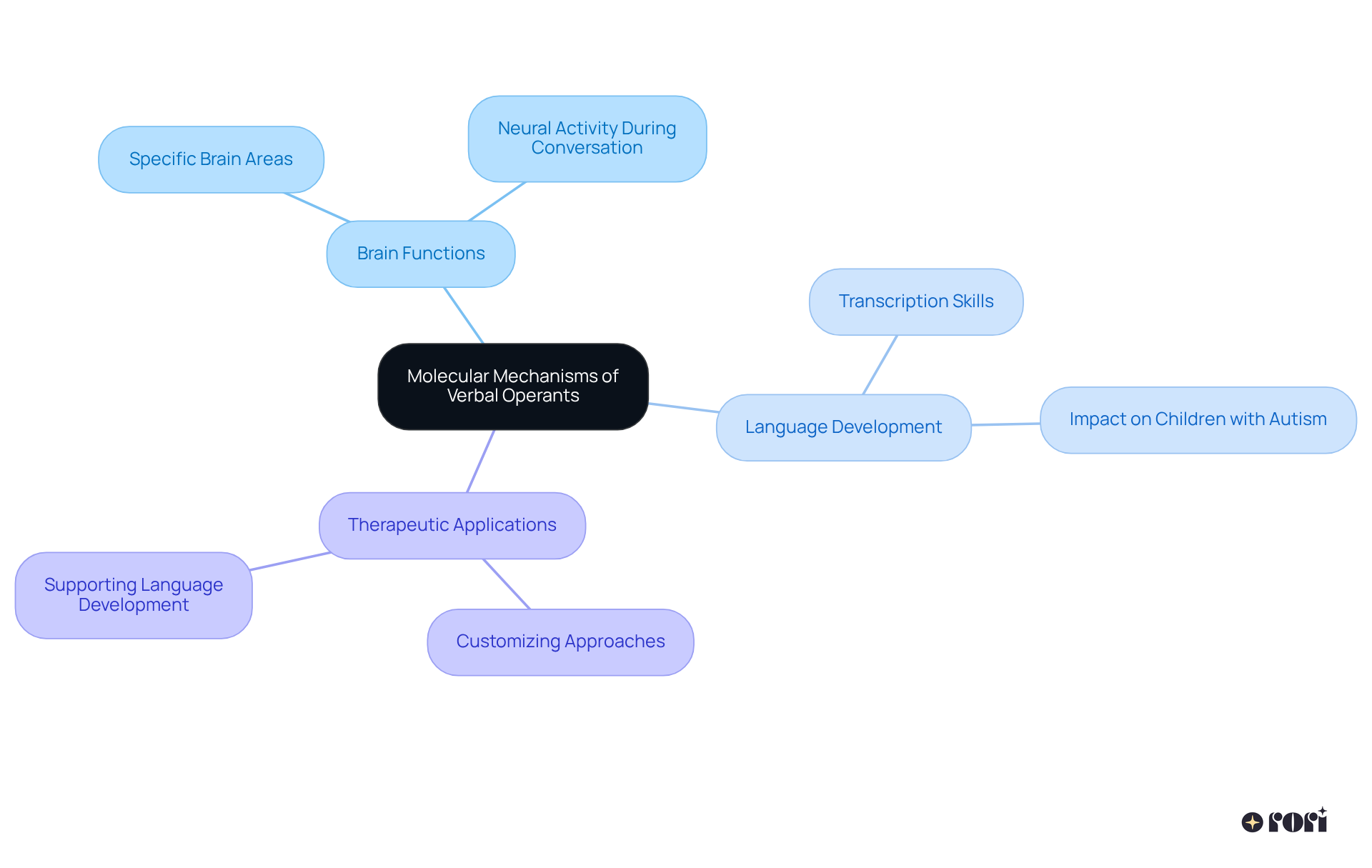
Transcription verbal operants are essential for helping children, especially those with autism, develop effective communication skills. By focusing on personalized ABA therapy strategies—like understanding various types of verbal operants and using tailored instruction—therapists can truly enhance a child's ability to express themselves and connect with their surroundings. This individualized approach not only nurtures communication growth but also lays the groundwork for social interactions and independence.
Throughout this article, we've explored several strategies for teaching transcription verbal operants, including:
Each method plays a vital role in crafting meaningful learning experiences that resonate with a child's unique learning style. Plus, understanding the underlying mechanisms of language acquisition highlights just how important these operants are for fostering effective communication skills.
Improving verbal operant skills is more than just teaching language; it’s about empowering children to engage with the world around them. By prioritizing personalized approaches and utilizing evidence-based strategies, parents and therapists can work hand in hand to support each child's communication journey. Embracing these methods can lead to transformative outcomes, allowing children to flourish in their interactions and build the confidence they need for lifelong success.
Let’s explore this together! Remember, you’re not alone on this journey—every step you take makes a difference in your child's life.
What is the focus of Rori Care's ABA therapy?
Rori Care focuses on individualized ABA therapy that emphasizes transcription verbal operants to foster meaningful connections and enhance communication growth in children.
How does Rori Care ensure therapy is personalized for each child?
Rori Care conducts thorough evaluations to identify each child's unique needs, allowing them to tailor interventions specifically to align with the child's distinct learning style.
What is the significance of understanding verbal operants in ABA therapy?
Understanding verbal operants is essential for helping youth with autism thrive in their interactions by guiding them in expressing needs, labeling surroundings, and joining conversations.
What types of verbal operants are explored in Brighter Strides ABA therapy?
Brighter Strides ABA explores various types of verbal operants, including mands, tacts, intraverbals, and transcription verbal operant.
How do verbal behaviors contribute to communication skills in ABA therapy?
Verbal behaviors are the building blocks of interaction skills, helping young individuals learn to communicate effectively, which is crucial for their social interactions and overall development.
What role do parents play in supporting their child's communication journey?
Parents are encouraged to explore resources and strategies alongside therapists, as they are not alone in supporting their child's communication development.